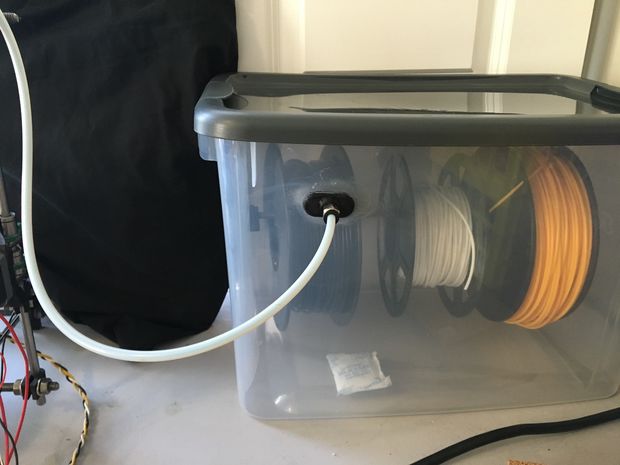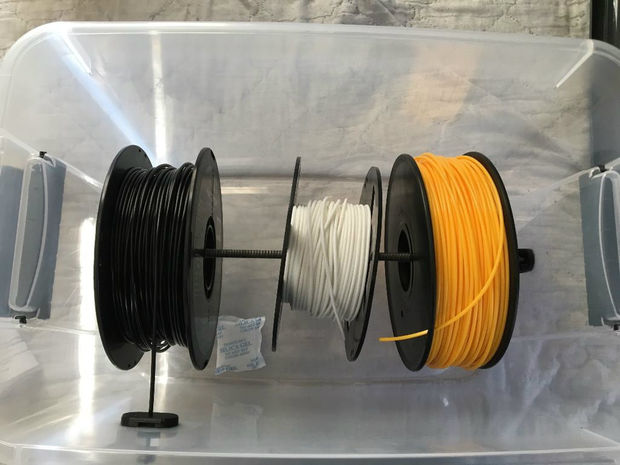
There’s a very useful Instructable describing how to keep your 3D printer filament from getting spoiled by humidity.
Humidity is the bane of 3D printer filaments, particularly PLA filament, which tends to absorb water from humid air. Humidified PLA is a horror: it swells slightly and intermittently, confusing the otherwise precise measurement of plastic volume extruded. Also, water in the filament can boil during the hot extrusion process, resulting in gaps and bubbles in your print. In some cases, you can actually hear “pops” as the water travels through the nozzle.
But none of that will happen if you keep your PLA dry. This is why PLA and most other 3D printer filaments are shipped in sealed plastic bags containing Silica Gel Desiccant packets. But once you crack that seal, the ambient humidity can access your PLA.
I happen to live in a rather dry environment, so PLA humidity issues are rarely a problem, but for many 3D printer operators, humid geographies are common. And problematic.
A very simple approach would be to keep the spools in a sealed bag until you use them, and replace them in the bag when not in use. But that’s not optimal.
If you want optimal, consider this Instructable by contributor mcfada: the Airtight Dry Box for 3D Printer Filament.
The idea is to keep your PLA spools in a completely dry environment all the time – even when you’re printing with them!

And the solution is pretty straightforward in this project. You simply convert a standard plastic tote box into a PLA carrier.
You’ll need to seal the lid so that it is relatively air-tight. You’ll mount a rod inside the box upon which spools can be hung, and finally you’ll add a just-big-enough port to allow filament to flow out of the box.
It’s an easy and inexpensive project, and probably one that anyone using a generic-filament-capable desktop 3D printer should do, especially if you live in a humid environment.
Via Instructables

